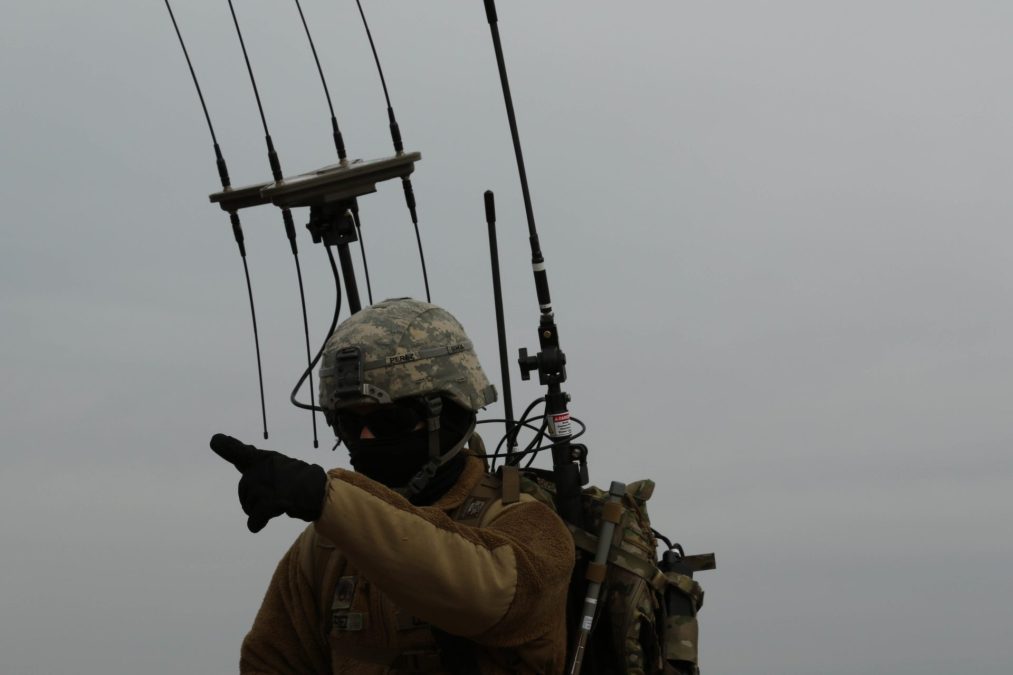Army’s growing arsenal of EW weapons seen as contributor to future counter-drone fights

Ongoing conflicts and operations across Europe and the Middle East have laid bare the threat that small unmanned aerial systems pose to ground forces. As the Army in particular looks to hasten counter-UAS capabilities that are flexible to units, the service said its forthcoming arsenal of electronic warfare systems can contribute to the counter-drone fight.
Army Chief of Staff Gen. Randy George has noted that the three areas the service needs to accelerate in and be more flexible are UAS, counter-UAS and EW.
Officials envision a layered approach of so-called hard kill — essentially shooting down drones with missiles or guns — and soft kill, which includes using “non-kinetic” methods such as electronic jamming.
For electronic warfare, tools can jam the communications link between drones and their operators — causing them to either return home or hover, or force them to crash.
As the Army is developing an arsenal of EW program-of record systems that will be ready for the battlefield over the next few years, it maintains those weapons do have counter-drone applications.
“C-UAS remains a critical priority for the Army. Electronic Warfare and radio frequency defeat capabilities are a critical component of a wholistic, layered defeat and protection approach. Although not primarily designed for C-UAS, all Army EW systems have direct and derived requirements to contribute to the overall C-UAS fight,” the Army’s program executive office for intelligence, electronic warfare and sensors, said in response to questions from DefenseScoop.
Forthcoming systems include:
- The Multi-Function Electronic Warfare-Air Large, a pod-mounted capability on a MQ-1C Gray Eagle drone for airborne electronic attack and limited cyber, made by Lockheed Martin.
- The Terrestrial Layer System-Brigade Combat Team, the first integrated electronic warfare, signals intelligence and cyber platform that will be mounted on Strykers and eventually the Army Multi-Purpose Vehicle, also made by Lockheed.
- The TLS-Manpack, the first dismounted electronic attack capability that soldiers can use to conduct jamming on the move, made by Mastodon Design LLC, a CACI subsidiary, based upon its Beast+ and Kraken systems that have been used by special operations forces.
Lockheed Martin declined to comment for this story.
CACI said counter-UAS was a requirement the Army added to its Manpack program.
“What we’re doing is looking at how to integrate some of the counter-UAS capabilities from like that we did [with] DARPA, into that Beast+ so that it can then provide that counter-UAS capability to the soldiers are carrying,” Erik Grant, vice president for counter-UAS solutions, said in an interview. “It gives them something where they’ve got a backpack capability, they can do multiple things — one of them being detecting and determining that’s a drone, and then they can go provide that jamming capability against the drone.”
He noted that the Army has recognized that it needs to have more on-the-move capability. And with a system that’s already able to look out in the RF spectrum, they can double dip.
“It’s like, ‘Hey can you just add some of your other capabilities that are able to detect these drones so we don’t have to buy a second box?’” Grant said.
The electronic warfare and drone environment in the Ukraine-Russia war has been a cat-and-mouse game of maneuvers and counter maneuvers from each side.
“What we’re starting to see though, is adversaries who understand how those technologies work, are adjusting the way those UAVs work in a way that they can get through that jam. Again, that’s what you see in Ukraine on a regular basis,” Grant said. “We see that where some of the jammers have limitations where you start to create some vulnerabilities, because people will understand what your counter can do and then they’ll adjust the UAV. It’s a cat-and-mouse game is really what we’re seeing in Ukraine and other places.”
Capabilities to counter improvised explosive devices that were deployed during the post-9/11 war on terror, included U.S. forces using jammers to block the signals of detonators (in fact, senior Army leaders have referred to UAS as flying IEDs). However, those tools were very rudimentary and indiscriminate, resulting in the jamming of friendly communications and signals.
Since then, electronic warfare tactics have advanced to be more surgical and the Army has been working on applying EW to counter-drone efforts for many years.



